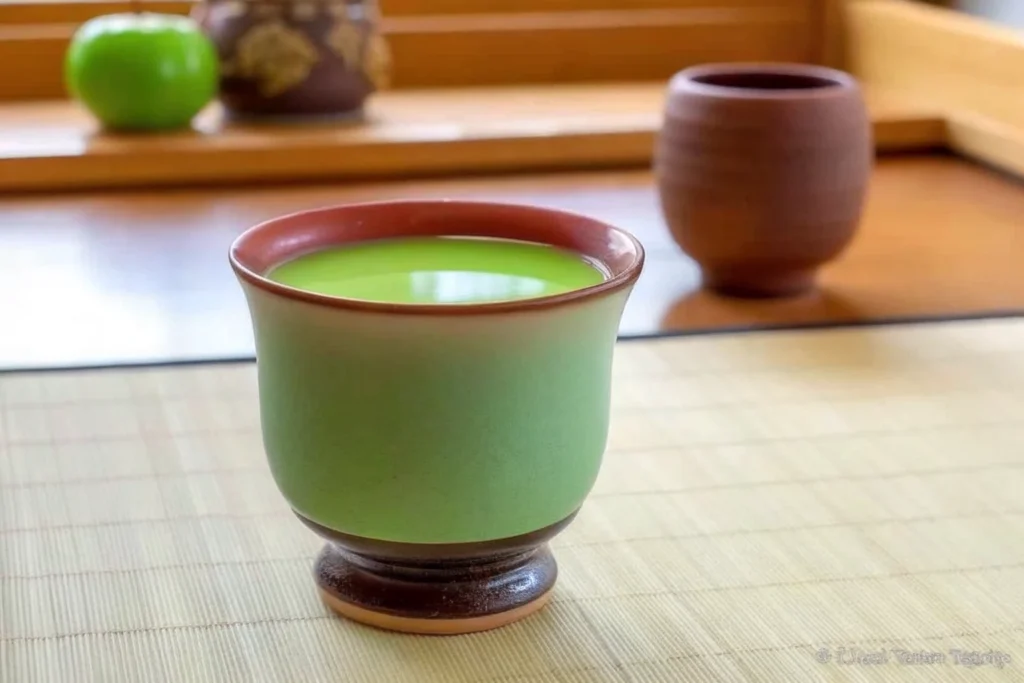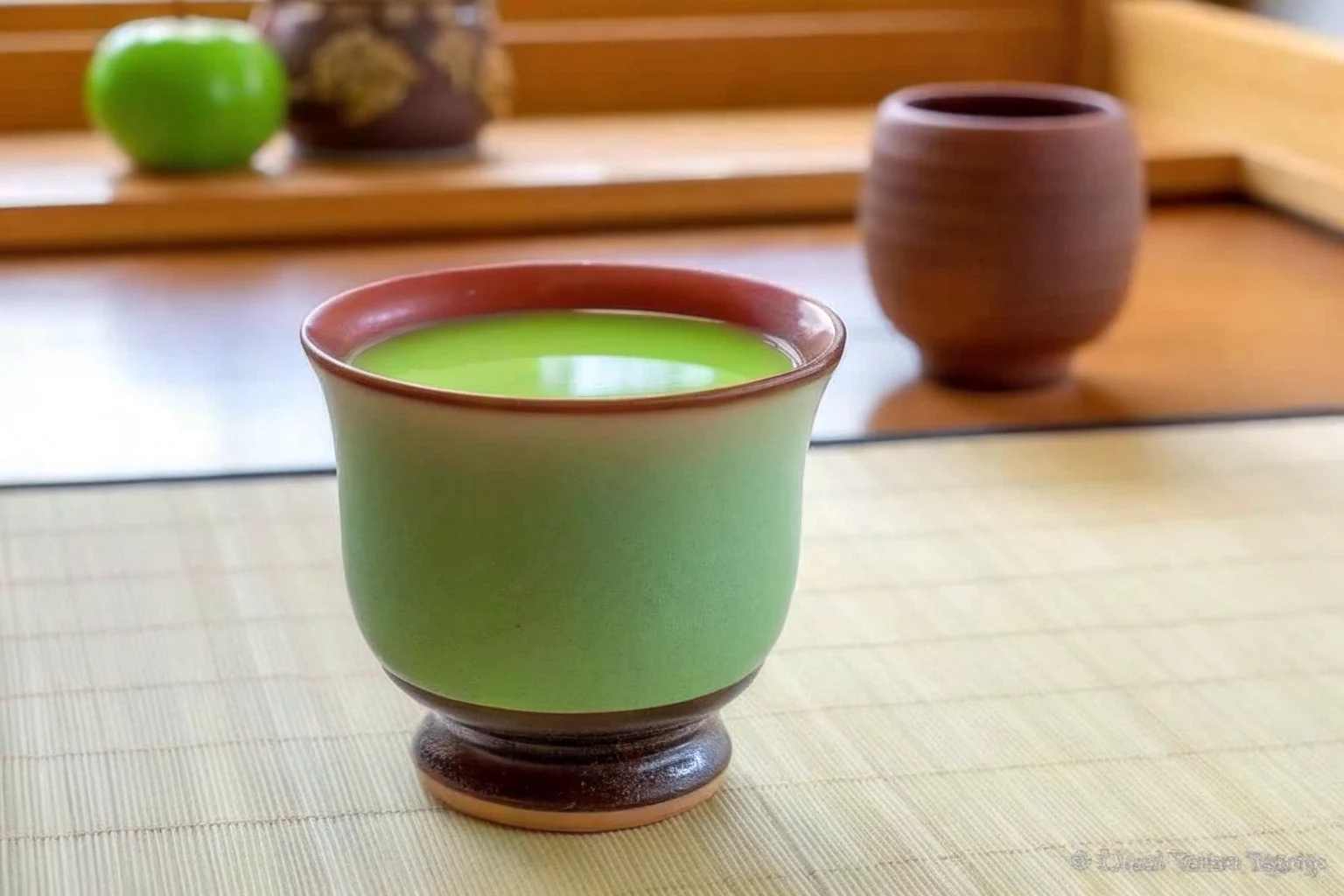Japanese Mounjaro Recipe – The Ultimate Guide to Flavorful Wellness
Japanese Mounjaro Recipe lovers are quickly discovering that this nutrient-packed, low-glycemic meal offers more than just flavor—it’s a smart, sustainable way to support blood sugar balance and appetite control. Designed for those following a Mounjaro plan or simply aiming to eat cleaner, the Japanese Mounjaro Recipe combines time-honored ingredients like tofu, miso, kabocha squash, and shirataki noodles to create a dish that’s as healing as it is satisfying.
In this complete guide, we’ll explore the cultural roots of the recipe, break down its ingredients, show you how to cook it step-by-step, and offer full-day meal plans based on Japanese wellness principles. You’ll also learn how to adapt it for dietary needs and compare it to other global Mounjaro recipe variations like Brazilian and natural options.
Don’t miss our High Protein Mounjaro Meals for more meal inspiration that keeps you satisfied and slim.
Introduction to the Japanese Mounjaro Recipe
What is the Japanese Mounjaro Recipe?

At its core, the Japanese Mounjaro recipe is a nourishing, low-calorie dish optimized for people following a Mounjaro-supported health journey. It combines lean proteins like grilled tofu or fish with fibrous veggies, light broths, and blood-sugar-stabilizing elements like miso, mushrooms, and seaweed.
This Japanese Mounjaro recipe isn’t just about losing weight—it’s about eating intentionally with ingredients that complement the effects of tirzepatide (Mounjaro), a medication used to treat type 2 diabetes and support weight loss. The Japanese version emphasizes clean, umami-rich components typical of washoku (traditional Japanese cooking), making it both therapeutic and deeply satisfying.
Although Mounjaro is relatively new to the global market, the approach of supporting it with specific diet plans has exploded in popularity—especially in health-conscious regions like Japan. Many Japanese home cooks have started crafting meals that naturally align with Mounjaro’s appetite-regulating properties by using ingredients like konjac noodles (shirataki), seaweed, fermented vegetables, and high-quality proteins like salmon or tofu.
Japan’s dietary focus on seasonal produce, natural probiotics, and moderate portions already aligns well with Mounjaro’s philosophy. That’s why the Japanese Mounjaro recipe isn’t some Western diet fusion—it’s a natural evolution rooted in nutritional wisdom.
Discover great ideas like Natural Mounjaro Recipe to explore how whole foods mimic medication results without synthetic additives.
Traditional Roots – Cultural Origins of Mounjaro Dishes
How Mounjaro-Style Recipes Fit into Japanese Cuisine
To understand the Japanese Mounjaro recipe, we need to take a quick look at the foundations of traditional Japanese food culture, known as washoku. Declared an Intangible Cultural Heritage by UNESCO, washoku emphasizes balance, seasonality, variety, and harmony—values that align perfectly with the dietary needs of Mounjaro users.
In Japanese cooking, meals are designed to stimulate the senses and satisfy hunger without overloading calories. Components like pickled vegetables, grilled fish, fermented soy, and miso-based broths deliver rich flavor and nutrients without spiking blood sugar levels. That makes them a seamless match for Mounjaro-friendly meals, which prioritize low-glycemic, high-fiber, and protein-rich foods.
Dishes like miso soup with tofu, simmered kabocha squash, and vegetable-laden hot pots (nabe) have long offered metabolic benefits. The Japanese Mounjaro adaptation simply builds on these classics, adjusting the portions and ingredient ratios to fit modern health needs.
Looking for inspiration? Try the Chicken Tempura Roll Recipe to get a protein-packed sushi-style idea that fits into this approach.
Regional Influences and Historical Adaptations
Different parts of Japan have contributed unique flavors and ingredients to this evolving Mounjaro approach. For example:
| Region | Key Ingredient Adaptation | Health Benefit |
|---|---|---|
| Kansai (Osaka/Kyoto) | Use of light soy-based broth in stews | Lower sodium impact |
| Hokkaido | Addition of seafood like scallops and salmon | Omega-3s for heart health |
| Kyushu | Fermented miso and barley | Gut-friendly probiotics |
| Okinawa | Bitter melon and tofu stir-fry | Insulin-sensitizing compounds |
These adaptations naturally reflect the Japanese wellness philosophy, where food is both nourishment and medicine. That’s what makes these regional dishes perfect templates for crafting Japanese Mounjaro Recipes that are culturally rich and metabolically smart.
Check out the Kabocha Squash Curry for a comforting Okinawan-style dish that fits beautifully into Mounjaro meals.
Core Ingredients in a Japanese Mounjaro Recipe

Essential Japanese Ingredients in Mounjaro Recipes
The success of any Japanese Mounjaro recipe lies in its ingredients. The goal is to create meals that are satisfying, flavorful, and aligned with the nutritional goals of Mounjaro users. Here’s a breakdown of the core items you’ll typically find:
| Ingredient | Function | Mounjaro Benefit |
|---|---|---|
| Tofu or Tempeh | Lean protein | Sustains fullness, stabilizes blood sugar |
| Konjac (Shirataki) Noodles | Low-carb noodle substitute | Promotes satiety with almost zero calories |
| Miso Paste | Fermented soybean base | Probiotic-rich, gut support |
| Kabocha Squash | Complex carb alternative | High fiber, slower digestion |
| Seaweed (Wakame/Nori) | Mineral-rich greens | Adds iodine, fiber, low calorie |
| Mushrooms (Shiitake, Enoki) | Umami & antioxidants | Enhance flavor without sodium |
| Daikon Radish | Detoxifying veggie | Low glycemic, supports digestion |
| Edamame | Soy protein | Plant-based protein boost |
| Rice Vinegar & Tamari | Seasoning | Low-sugar, gluten-free flavor options |
These ingredients work synergistically to support a slow glucose response, sustained energy, and gut health—making them ideal for those using Mounjaro to manage type 2 diabetes or pursue weight loss.
Don’t miss our Healthy Snacks for Mounjaro Users to see how you can extend these ingredients beyond meals into snacks.
Substitutes and Allergy-Friendly Alternatives
Whether you’re managing allergies, sensitivities, or simply can’t find a specific item, you can still enjoy a Japanese Mounjaro meal with smart substitutions:
| Original Ingredient | Substitution | Notes |
|---|---|---|
| Soy-based tofu | Chickpea tofu or hemp tofu | Soy-free options with similar texture |
| Miso paste | Coconut aminos + tahini | For soy allergies |
| Shirataki noodles | Spiralized zucchini | Equally low carb and fresh |
| Tamari | Coconut aminos | Gluten-free and lower in sodium |
| Seaweed | Kale chips or spinach | Not as iodine-rich but fiber-packed |
With these swaps, the core benefits of the Japanese Mounjaro recipe stay intact while accommodating dietary needs.
Step-by-Step Japanese Mounjaro Recipe
Preparing the Base (Protein, Vegetables, Broth)
Building a nourishing Japanese Mounjaro dish starts with selecting the right foundation. The key is balance—a protein-rich core, paired with low-carb vegetables and a light, flavorful broth.
Step 1: Choose Your Protein
- Grilled tofu (firm, drained, sliced, and seared)
- Steamed salmon or mackerel (high in omega-3s)
- Poached chicken breast (lean, simple, clean)
Each protein supports fullness while being gentle on digestion—ideal for Mounjaro users who may experience appetite suppression.
Step 2: Add Mounjaro-Friendly Vegetables
Select a blend of slow-digesting, nutrient-rich vegetables:
- Kabocha squash, diced and steamed
- Daikon radish, grated or thinly sliced
- Shiitake mushrooms, pan-seared for umami
- Spinach or bok choy, wilted in broth
These choices stabilize blood sugar and bring essential minerals like magnesium and potassium.
Step 3: Create a Light Japanese Broth
In a saucepan, combine:
- 2 cups low-sodium vegetable broth or dashi
- 1 tablespoon miso paste (dissolved in warm water first)
- 1 teaspoon tamari (or coconut aminos)
- 1 slice fresh ginger and a dash of rice vinegar
Simmer gently for 10–15 minutes to blend the flavors. This broth should be light yet deeply savory, aligning with the Japanese principle of umami-forward taste without heaviness.
Check out this Brazilian Mounjaro Recipe to compare how international versions differ in base components.
Cooking Method: From Simmer to Sizzle
Step 4: Combine and Simmer
Layer your prepared ingredients in a deep bowl or clay pot:
- Start with tofu or fish.
- Add steamed veggies in layers.
- Pour hot broth over the mix.
- Sprinkle with sliced green onions and sesame seeds.
Let sit for 5 minutes so the flavors soak in fully.
Step 5: Optional Add-Ons
Add heat, crunch, or variety with:
- Chili oil or shichimi togarashi (for spice lovers)
- Toasted seaweed strips
- Shirataki noodles (blanched and rinsed)
Sample Plate Build:
| Element | Ingredient |
|---|---|
| Protein | Grilled tofu or fish |
| Veggie Base | Kabocha squash, mushrooms |
| Broth | Light miso-ginger broth |
| Extras | Shirataki noodles, scallions |
This Japanese Mounjaro recipe serves beautifully in a donabe (Japanese clay pot), but any deep bowl works fine. Serve hot and enjoy immediately for full flavor.
Health Benefits of the Japanese Mounjaro Recipe

How the Japanese Mounjaro recipe Aligns with Mounjaro Medication Protocols
One of the biggest reasons the Japanese Mounjaro recipe stands out is how well it aligns with the pharmacological goals of tirzepatide (Mounjaro)—an injectable used to manage type 2 diabetes and support sustainable weight loss. The recipe’s design supports key effects of the medication, including:
- Delayed gastric emptying: Mounjaro slows how quickly food leaves the stomach. This dish complements that process by using high-fiber ingredients like kabocha squash and daikon, which extend satiety.
- Blood sugar regulation: Low-glycemic components like tofu, konjac noodles, and miso broth help prevent glucose spikes and crashes.
- Appetite regulation: Japanese Mounjaro meals are nutrient-dense but calorie-light, making them perfect for people who feel full more quickly on the medication.
The synergy between this dish and the medication means you’re not just eating clean—you’re enhancing the therapeutic outcome.
Low-Glycemic, High-Fiber, and Nutrient-Dense Features
Let’s break down the core benefits by nutritional category:
| Feature | How It Helps Mounjaro Users | Example Ingredient |
|---|---|---|
| Low-Glycemic | Prevents blood sugar spikes | Shirataki noodles, tofu |
| High-Fiber | Promotes satiety and digestive health | Seaweed, daikon radish |
| Lean Protein | Preserves muscle mass during weight loss | Grilled fish, tempeh |
| Micronutrient-Dense | Supports immunity and energy metabolism | Miso, bok choy, shiitake |
| Anti-Inflammatory | Reduces systemic inflammation linked to diabetes | Ginger, fermented soy |
Mounjaro-friendly meals like this one are designed to work with your body—not against it. That’s what makes Japanese cuisine such a smart, sustainable approach to metabolic wellness.
Don’t miss our Mounjaro-Friendly Meals Guide to expand your day-to-day meal planning with more evidence-backed recipes.
Japanese Mounjaro Meal Ideas for the Whole Day
Mounjaro-Approved Breakfast, Lunch, and Dinner Options
One of the most effective ways to benefit from a Japanese Mounjaro recipe is by incorporating it into your full day of eating. The goal is to maintain blood sugar stability, improve digestion, and reduce cravings—without sacrificing taste or culture.
Breakfast: Miso Soup with Tofu and Greens
Start your day light yet satisfying:
- 1 cup low-sodium miso broth
- Cubes of soft tofu
- Baby spinach or wakame
- A sprinkle of sesame seeds
Why it works: Low-carb, probiotic-rich, and gently warming. Supports digestion and gut health from the start.
Lunch: Salmon & Shirataki Noodle Bowl
Perfect midday meal to keep energy stable:
- Grilled or steamed salmon (3 oz)
- Shirataki noodles, lightly sautéed
- Sliced daikon, carrots, and bok choy
- Drizzle of tamari or yuzu ponzu
Why it works: High protein and omega-3s boost satiety, while shirataki keeps carbs ultra-low.
Dinner: Kabocha and Mushroom Hot Pot
Comforting, fiber-rich evening choice:
- Steamed kabocha squash
- Shiitake and enoki mushrooms
- Tofu cubes or edamame
- Simmered in miso-ginger broth
Why it works: Warm, grounding, and deeply flavorful while remaining under 400 calories.
Balanced Eating Throughout the Day
Here’s a simple table showing how to distribute macronutrients in a Mounjaro-aligned Japanese day:
| Meal | Protein (g) | Carbs (g) | Fiber (g) | Notes |
|---|---|---|---|---|
| Breakfast | 10–15 | 5–10 | 3–4 | Light and digestive-friendly |
| Lunch | 20–30 | 10–15 | 6–8 | Energy-sustaining combo |
| Dinner | 15–20 | 10–12 | 6–8 | Fiber-rich and calming |
These meals avoid blood sugar crashes and fit neatly within Mounjaro’s appetite-suppressing structure, allowing you to eat smaller but more nutritionally dense portions throughout the day.
Comparing Japanese vs Brazilian vs Natural Mounjaro Recipes
Key Ingredient Differences and Similarities
With the growing popularity of Mounjaro-based recipes, several regional variations have emerged—each offering its own twist on ingredients, preparation style, and health benefits. Among the most notable are Japanese, Brazilian, and natural Mounjaro recipes.
Here’s a side-by-side breakdown of the differences:
| Feature | Japanese Mounjaro | Brazilian Mounjaro | Natural Mounjaro |
|---|---|---|---|
| Core Proteins | Tofu, salmon, mackerel | Chicken, black beans, beef cuts | Lentils, eggs, tempeh |
| Vegetables Used | Daikon, bok choy, squash | Okra, carrots, kale | Zucchini, spinach, cauliflower |
| Carbohydrates | Shirataki noodles | Cassava flour, rice | Sweet potato, quinoa |
| Seasoning Style | Miso, tamari, dashi | Garlic, onion, olive oil | Herbs, lemon, cumin |
| Cultural Influence | Washoku (Japanese cuisine) | Brazilian comfort food traditions | Whole-food, minimalist approach |
| Meal Texture | Light, brothy, clean | Rich, dense, stew-like | Balanced and earthy |
Each version aligns with different dietary preferences but still promotes appetite control and metabolic health, key benefits for Mounjaro users.
Check out the Brazilian Mounjaro Recipe to dive into that version’s bold flavors and hearty textures.
Flavor Profiles and Nutrition Comparison Table
Let’s take a look at the flavor, calorie count, and glycemic impact across the three styles:
| Type | Flavor Profile | Avg Calories/Serving | Glycemic Load | Texture |
|---|---|---|---|---|
| Japanese | Umami, mild, fresh | 300–350 | Low | Brothy, clean |
| Brazilian | Bold, savory | 400–500 | Moderate | Thick, stew-like |
| Natural | Earthy, nutty | 350–400 | Low | Soft, plant-based |
From this comparison, it’s clear that Japanese Mounjaro recipes are ideal for those who:
- Want light, low-glycemic meals
- Prefer subtle flavors and clean eating
- Follow an anti-inflammatory diet
On the other hand, Brazilian versions cater to hearty appetites, while natural Mounjaro meals are perfect for those skipping medication but still seeking glycemic control via diet.
Tips for Making the Best Japanese Mounjaro Meals
Cooking Hacks for Maximum Flavor with Minimum Calories
If you’re looking to make the most out of your Japanese Mounjaro recipe, a few strategic cooking techniques can elevate your dish while keeping calories and glycemic load low. These tips help retain the authentic flavors of Japanese cuisine while aligning perfectly with Mounjaro-supported dietary goals.
1. Use Umami-Rich Bases
Start with natural flavor enhancers like miso paste, shiitake mushroom powder, or a kombu-dashi broth. These boost taste without needing added sugars or sodium-heavy sauces.
2. Marinate Lean Proteins
Whether you’re working with tofu, tempeh, or salmon, a 15-minute marinade of tamari, grated ginger, and rice vinegar makes a world of difference. It locks in flavor without excess oil.
3. Avoid Overcooking Vegetables
Keep daikon, kabocha, or bok choy crisp-tender. Overcooked veggies lose fiber and nutrients, which are crucial for supporting Mounjaro’s metabolic benefits.
4. Steam Instead of Fry
Steam proteins and vegetables wherever possible. This technique keeps meals light, soft on the gut, and consistent with traditional Japanese Mounjaro recipe practices.
5. Boost Satiety with Smart Toppings
Top bowls with toasted sesame seeds, nori strips, or a sprinkle of crushed almonds. These offer crunch, healthy fats, and added fiber to help you feel full longer.
Storage, Meal Prep, and Batch Cooking Techniques
One of the biggest advantages of Japanese Mounjaro meals is their make-ahead flexibility. You can prep a few core ingredients and build different bowls throughout the week.
Batch Cooking Basics:
| Ingredient | How to Prep and Store | Fridge Life |
|---|---|---|
| Tofu | Press, cube, and pan-sear | 4–5 days |
| Miso Broth | Simmer in bulk and cool | 1 week |
| Shirataki Noodles | Rinse, blanch, and pack in portions | 4–5 days |
| Grilled Veggies | Roast or steam in advance | 3–4 days |
Pro Meal Prep Tip:
Use stackable bento boxes or glass containers to keep ingredients separate. This preserves texture and makes last-minute assembling faster.
By incorporating these tips, you’ll not only master the best Japanese Mounjaro recipe but also ensure it works for busy weekdays, meal prepping goals, and your overall Mounjaro lifestyle.
Customizing Japanese Mounjaro Recipes for Special Diets
Vegan, Gluten-Free, and Low-Sodium Modifications
One of the best features of the Japanese Mounjaro recipe is how easy it is to adapt for different dietary restrictions. Whether you’re vegan, gluten-intolerant, or watching your sodium intake, there are plenty of smart swaps that retain the dish’s nutritional power and authentic taste.
For a Vegan Japanese Mounjaro Recipe:
- Replace fish or eggs with grilled tempeh, edamame, or chickpea tofu.
- Use vegan miso paste (some versions contain fish-derived dashi).
- Add richness with sesame oil and umami from mushrooms or fermented black beans.
Gluten-Free Adjustments:
- Use tamari or coconut aminos in place of soy sauce.
- Avoid any miso pastes containing barley or wheat.
- Check all seasoning labels to confirm gluten-free certification.
For Low-Sodium Diets:
- Use a kombu-only broth (skip the dashi stock if it includes salt).
- Limit miso to ½ tablespoon and dilute with extra water.
- Add flavor with fresh herbs like shiso, grated ginger, or citrus zest instead of salty sauces.
These tweaks let you enjoy the full experience of the Japanese Mounjaro recipe while aligning with your individual health goals.
Kid-Friendly and Meal-Prep-Friendly Variants
Getting the family (especially kids) to enjoy Mounjaro-friendly meals can be easy when you adapt the presentation and texture.
Kid-Friendly Adaptations:
- Serve ingredients separately in a bento-style tray so kids can mix and match.
- Use fun shapes (like star-cut carrots or rice molds) to make it visually appealing.
- Mild out strong flavors—opt for plain tofu and use a vegetable broth base instead of miso.
Meal-Prep Flexibility:
- Cook once, eat multiple ways: Use your base tofu and kabocha to make soups, stir-fries, or wraps.
- Keep toppings separate to maintain texture.
- Rotate flavor profiles using different sauces: miso-ginger one day, sesame-tamari the next.
By customizing based on preference and need, you make the Japanese Mounjaro recipe a staple for the whole household. It’s an adaptable, nourishing meal style that supports blood sugar balance, weight management, and overall metabolic wellness—while tasting amazing.
FAQs About Japanese Mounjaro Recipes
What are the ingredients for Mounjaro?
The core ingredients in a Japanese Mounjaro recipe include lean proteins like tofu or grilled salmon, high-fiber vegetables such as kabocha squash, daikon, and mushrooms, and low-carb elements like shirataki noodles. These are typically simmered in a light miso-ginger broth and flavored with tamari, sesame oil, or seaweed for an umami-rich finish. The goal is to support satiety and blood sugar stability.
Is natural Mounjaro a real thing?
Yes, natural Mounjaro refers to meals designed to mimic the effects of Mounjaro (tirzepatide) without using the actual medication. These recipes rely on whole, unprocessed foods like leafy greens, fermented soy, omega-3-rich fish, and high-fiber vegetables to naturally reduce appetite, regulate blood sugar, and support metabolic health. The Japanese Mounjaro recipe fits well within this approach thanks to its emphasis on nutrient-dense, traditional ingredients.
What is Brazilian Mounjaro made of?
A Brazilian Mounjaro recipe often uses protein-rich meats like chicken or beef, along with starchy vegetables such as cassava, okra, or carrots. It features bold seasonings including garlic, onion, and cumin, and is typically cooked as a stew. While the style differs from the lighter, broth-based Japanese version, both are designed to align with Mounjaro’s appetite-regulating effects through whole food nutrition.
What do I eat in a day on Mounjaro Recipes?
A day on the Japanese Mounjaro recipe plan might look like:
Breakfast: Miso soup with tofu and wakame
Lunch: Shirataki noodle bowl with grilled salmon and daikon
Snack: Edamame or seaweed crisps
Dinner: Miso-based hot pot with kabocha squash and mushrooms
This structure supports steady energy, satiety, and balanced macros throughout the day, making it ideal for those on Mounjaro or following a similar eating plan.
Conclusion: Make the Japanese Mounjaro Recipe Your Wellness Staple
The Japanese Mounjaro recipe isn’t just a trending dish—it’s a thoughtful, research-backed approach to eating that supports your Mounjaro journey. With its roots in traditional Japanese cuisine and its alignment with modern metabolic science, this recipe delivers maximum nutrition, minimum glycemic impact, and deep satisfaction in every bowl.
Whether you’re using Mounjaro for weight management or simply looking for blood sugar-friendly meals, integrating the Japanese Mounjaro recipe into your weekly rotation can transform your health one bite at a time.
For daily recipes, updates, and foodie favorites, follow us on Facebook and join the community of healthy dessert lovers!

Japanese Mounjaro Recipe
Ingredients
Equipment
Method
- Prepare the tofu: Slice pressed tofu into thick pieces and sear in a pan until golden brown on each side. Set aside.
- Steam vegetables: In a steamer or pot, gently steam the kabocha squash, mushrooms, daikon, and greens until just tender (about 7–10 minutes).
- Make the broth: In a saucepan, combine the broth, dissolved miso paste, tamari, ginger, and rice vinegar. Simmer on low heat for 10–15 minutes to develop flavor.
- Blanch the noodles: Rinse shirataki noodles well and blanch in boiling water for 2–3 minutes. Drain and set aside.
- Assemble the bowl: In a deep bowl or donabe, layer tofu, vegetables, and shirataki noodles. Pour hot broth over the top.
- Garnish and serve: Sprinkle with sesame seeds and green onion. Add optional chili oil or spice mix for extra heat. Let sit for 5 minutes before enjoying.

